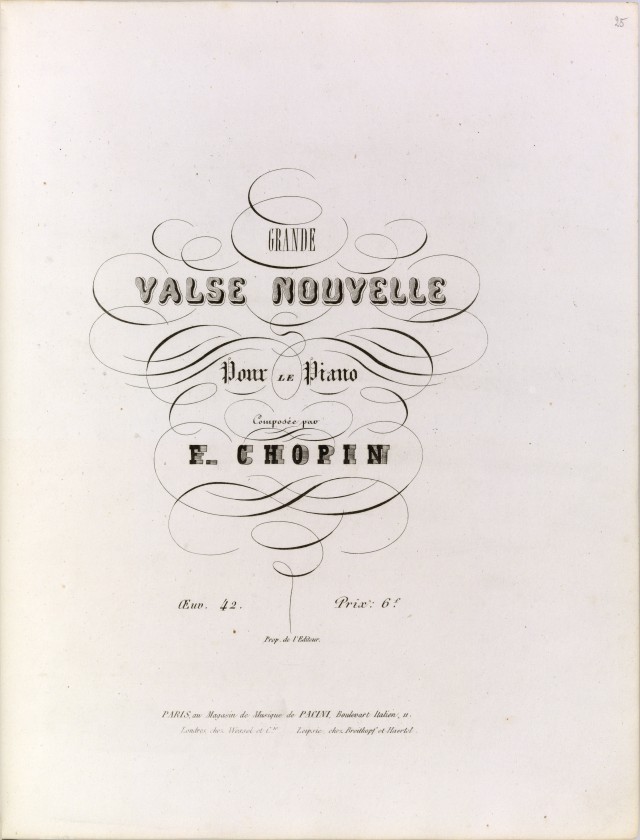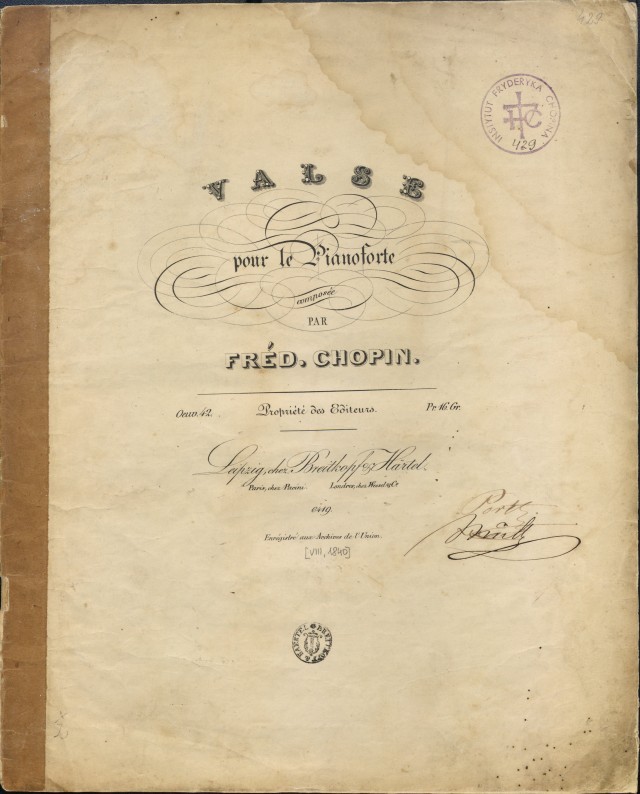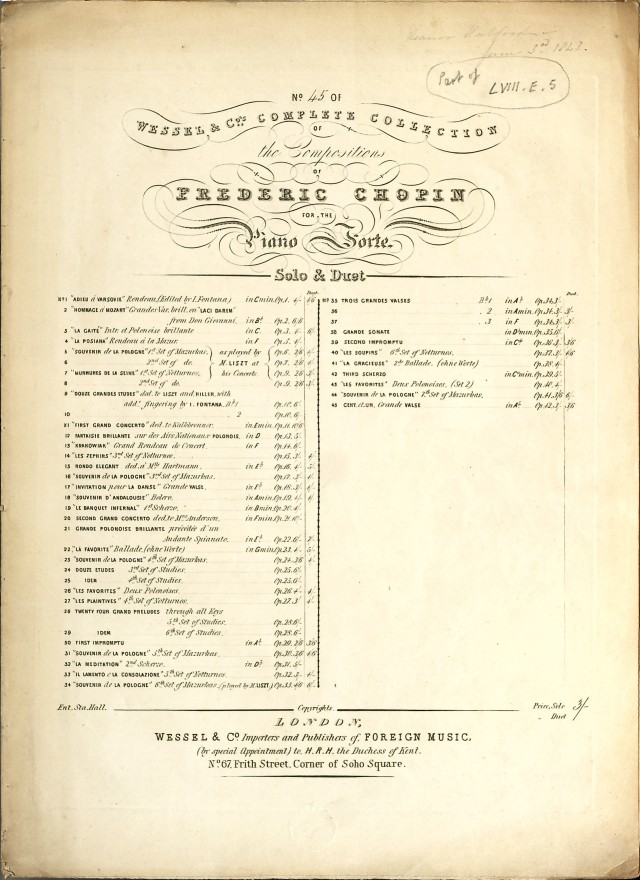



FE - French edition

Pacini, Paris, plate number 3708:
FE0 ‒ proof, before 18 VI 1840,
FEG ‒ Chopin base text to GE (proof of FE0 with Chopin's annotations), VI 1840,
FE1 ‒ first French edition, 30 VI 1840.
Two copies with pencilled annotations coming from Chopin:
FED ‒ copy belonging to Camille O'Méara-Dubois,
FEJ ‒ copy belonging to Ludwika Jędrzejewicz.
GE - German edition
Filiation of sources
The earliest indirectly preserved (thanks to the FEG copy) source of the Waltz is FE0 – a proof copy of FE based on the lost manuscript, [A]. FE0 copies with Chopin’s corrections and additions served as base text for all three editions. In a letter to the German editor, the Breitkopf & Härtel company, Chopin wrote: (...) Since on the 30th of the current month Mr. Paccini publishes [30 VI 1841] one of my Waltzes in his collection One Hundred and One, I feel obliged to send you one copy. I hope that the edition will not encounter difficulties (...). The base text attached by Chopin – FEG – was not fully reproduced. In the finished GE1 (VII 1840), a few of the composer’s annotations were overlooked; moreover, it includes a number of mistakes and shows signs of the editor’s revisions. The case of EE is similar – besides corrections and supplements attributable to Chopin, alien revisions are visible, and the edition itself was not proofread by Chopin. The changes introduced by the composer in three FE0 copies (for FE, GE and EE) not always coincide, yet in the majority of cases they can be considered as complementary. The differences may be explained with irregularity of the corrections, as well as with different extent of the notes’ accuracy in analogous places. In GE2 and then in GE3, a part of GE1 mistakes was corrected, at the same time a number of arbitrary changes was introduced.
Principles behind the main text of
the Waltz in A flat major, Op. 42
The proof copy of FE, reviewed by Chopin, served as basis for each of the first three editions. The introduced changes do not always overlap, although in the majority of the cases they can be considered as complementary. We apply them to the text of FE0, based directly on [A], adhering to the following rules:
-
we introduce to the main text Chopin's compliant proofreadings of at least two editions;
-
we consider the differing variants introduced only in one of the editions as optional (variants, marks in parentheses); it also applies to the places which Chopin proofread in the editions in different ways;
-
we take into consideration Chopin’s annotations in pupil’s copies.


